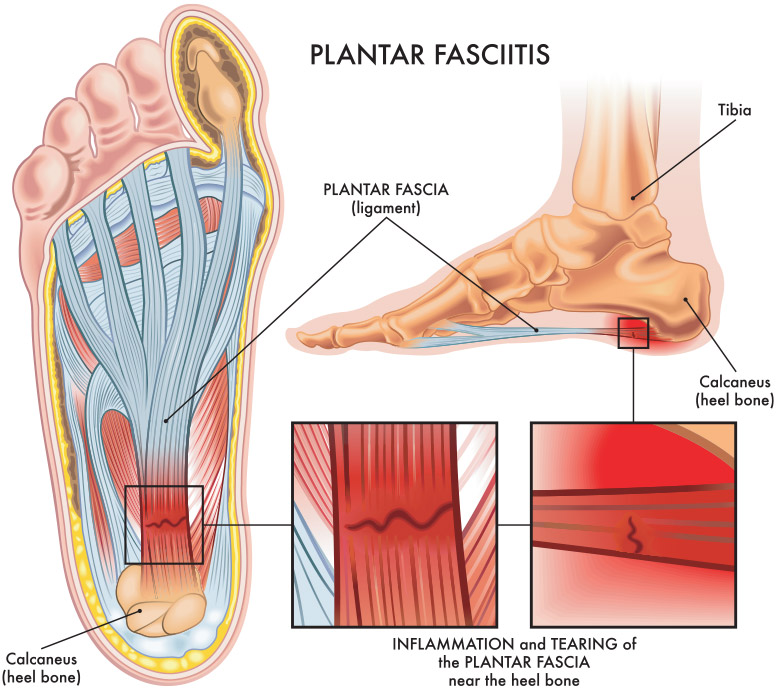
Patient History
This case study involves a 44-year-old female who works as a full-time cafeteria worker, homemaker, and church volunteer. She complained of bilateral foot pain and Achilles tendon pain that has been going on “for years” and is slowly getting worse. She denied any recent trauma, night sweats, fevers, unknown weight changes, bowel or bladder changes, or sciatica-type symptoms. She has seen a podiatrist multiple times in the past, had foot X-rays, and had multiple steroid injections to each foot, the last one occurring three weeks ago to the right foot with no help. I did not have access to her X-ray records, and she could not remember the podiatrist mentioning any significant findings
Initial Exam Findings
She had a numeric pain scale that fluctuated between zero and seven out of 10 for her right and left foot, which increased with weight-bearing activities and decreased with rest. The pain usually did not keep her up at night but hurt in the morning upon arising, after sitting, and as the day went on. Her past medical history was benign.

On examination, she was 5’ 2” and had a stated weight of 235. Her tennis shoe size was 6.5. Her feet demonstrated good pulses, nail beds, and no visible swelling or skin color changes. She had no visible limp. Her Foot Levelers pronation index was 127, with her right arch dropping more than her left arch. We evaluated her feet and Achilles tendons using extracorporeal shockwave via a PiezoWave2 unit using a 10 mm focused spacer, demonstrating lots of shockwave activity along both plantar fascia and Achilles tendon areas.
Clinical Impressions
My diagnosis of this patient was cumulative trauma mechanism of injury of chronic plantar fasciitis and Achilles tendinosis, which were the result of fallen arches and overpronation.
Treatment Plan
Treatment involved fitting the patient with custom orthotics from Foot Levelers. The patient was instructed to wear the CAOS® Wave custom orthotic flip-flops, primarily upon rising and around the house, along with the InMotion® orthotic during other activities of daily living and work. She was also instructed on home foot rehab exercises that involved strengthening the peroneus muscle, stretching the calf muscles, and strengthening the foot's intrinsic muscles. A series of extracorporeal shockwave treatments were also done on each foot using a 10 mm spacer, and the shockwave intensity was adjusted to a patient's pain level of 5 to 6 out of 10. Four thousand pulses were administered to each foot every week. Total number of treatments was nine.
On her last visit, the patient stated that she had very little pain, which was one out of 10. She said she loved her custom orthotics and was very happy with her care.
Results
Plantar fasciitis is estimated to occur in about 10% of the population in the United States. Contributing factors can include weight and intensity of weight-bearing activities. In my opinion, it is the slow breakdown of the arch vault of the foot due to the creep of the plantar fascia, primarily if not appropriately supported over time. The repeated cumulative trauma begins to break down the muscles, tendons and ligaments in the bottom of the foot and can extend into the Achilles tendons. Our regimen involves identifying the deterioration of the arches of the foot and supporting them properly, applying regenerative therapy to the bottoms of the feet in the form of extracorporeal shockwave therapy, and home rehab during the healing phase. This conservative treatment plan has been shown to be very effective in this case and warrants further study.
References:
- Buchanan, B. K., Sina, R. E., & Kushner, D. (2024, January 7). Plantar Fasciitis. In StatPearls. StatPearls Publishing. https://www.ncbi.nlm.nih.gov/books/NBK431073/
- Sun, J., Gao, F., Wang, Y., Sun, W., Jiang, B., & Li, Z. (2017). Extracorporeal shock wave therapy is effective in treating chronic plantar fasciitis: A meta-analysis of RCTs. Medicine, 96(15), e6621. https://doi.org/10.1097/MD.0000000000006621